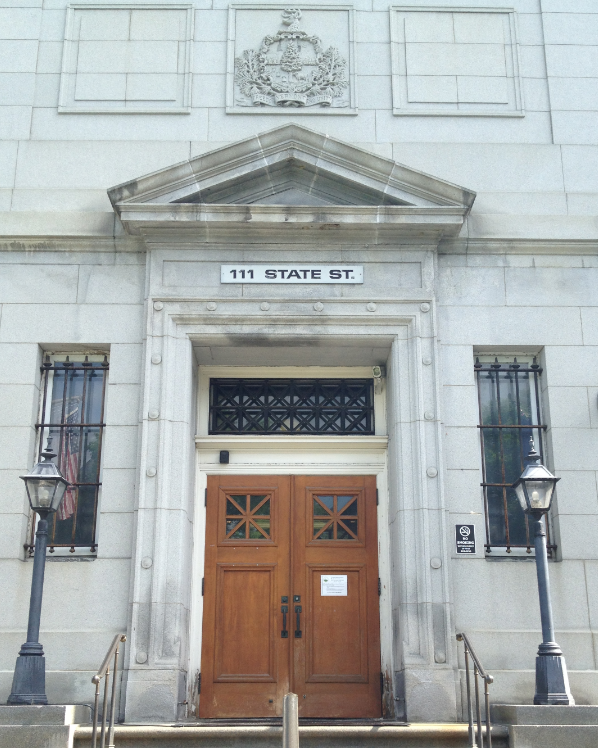Haupt v. Triggs , 2022 VT 61 [filed December 16, 2022]
REIBER, C.J. This appeal stems from third-party claims in a legal-malpractice action. Plaintiffs filed suit against defendant, attorney Daniel S. Triggs, who represented plaintiffs in a property dispute for allowing 12 V.S.A. § 501’s statute of limitations for recovery of lands to run without filing an ejectment suit against neighbors. Triggs filed a third-party complaint for contribution and indemnification against the attorneys who succeeded Triggs as counsel to plaintiffs in the matter. The third-party complaint for indemnity and contribution, alleges that the underlying adverse-possession suit against plaintiffs was meritless and that third-party defendants should have obtained a merits judgment instead of settling the dispute. Third-party defendants filed a motion to dismiss Triggs’s complaint, and the civil division granted their motion. Triggs appeals this dismissal and urges this Court to overturn its longstanding precedent regarding contribution and indemnity. We decline to do so and affirm the civil division’s dismissal
In granting Third-party defendants filed a Vermont Rule of Civil Procedure (12)(b)(6) motion to dismiss the civil division concluded that Triggs had failed to allege any relationship between himself and third-party defendants that might give rise to an implied right of indemnity, and that his claim “is at best a claim for contribution among joint tortfeasors, which Vermont law does not recognize.”
“[A]lthough we are not ‘slavish adherents’ to [the doctrine of stare decisis], neither do we lightly overturn recent precedent, especially where the precedent could be changed easily by legislation at any time.” O’Connor v. City of Rutland, 172 Vt. 570, 570, 772 A.2d 551, 552 (2001) (mem.). To overturn precedent, “we generally require more than mere disagreement.” State v. Berini, 167 Vt. 565, 566, 701 A.2d 1055, 1056 (1997) (mem.
Triggs argues that Vermont’s no-contribution rule should not apply to claims brought by prior counsel against successor counsel in legal-malpractice suits. He cites cases from California, Illinois, Maine, Massachusetts, Maryland, Washington, and Wisconsin, where courts allowed contribution claims under similar circumstances, and he discusses the public-policy concerns underlying these cases. Unlike Vermont, however, those jurisdictions recognized contribution, either by statute or at common law, at the time these cases arose.
We have for decades declined to revisit our no-contribution rule, preferring not to substitute judicial fiat for legislative action. Triggs cites no Vermont authority supporting his argument that this Court should overturn its well-settled precedent regarding contribution, and, even if he did so, we are not inclined to weigh the comparative merits of competing public-policy arguments, which is a matter best left to the Legislature.
Because Triggs does not allege that third-party defendants expressly agreed to indemnify him, his indemnity claim will survive only if implied by a legally cognizable relationship. It is axiomatic that a party seeking implied equitable indemnity may recover only where its potential liability is vicariously derivative of the acts of the indemnitor and it is not independently culpable. Heco v. Foster Motors, 2015 VT 3, ¶ 10, 198 Vt. 377, 114 A.3d 902. Triggs does not allege that any legal relationship—contractual or otherwise— existed between him and third-party defendants. Instead, Triggs alleges that third-party defendants’ independent actions caused plaintiffs’ injury. This is not a basis for implied indemnity. Triggs has alleged no legally cognizable relationship linking him to third-party defendants and, therefore, his indemnification claim must fail as a matter of law.
According to our precedents, “indemnity is a right accruing to a party who, without active fault, has been compelled by some legal obligation, such as a finding of vicarious liability, to pay damages occasioned by the negligence of another.” Morris v. Am. Motors Corp., 142 Vt. 566, 576, 459 A.2d 968, 974 (1982). “Unlike contribution in which liability is shared by joint tortfeasors, the right of indemnity shifts the entire loss upon the real wrongdoer.” Peters, 159 Vt. at 428, 620 A.2d at 1270. In Vermont, indemnity arises in two ways: (1) through “an express agreement by one party to indemnify the other, or (2) [because] the circumstances are such that the law will imply such an undertaking.” Id. at 427, 620 A.2d at 1270. The latter, “[i]mplied indemnity[,] will apply only when the party seeking indemnity is vicariously or secondarily liable to the third person because of a legal relationship with the third person or because of the party’s failure to discover a dangerous condition caused by the indemnifying party.” Hemond v. Frontier Commc’ns of Am., Inc., 2015 VT 67, ¶ 11, 199 Vt. 272, 123 A.3d 1176 (quotation omitted). “[I]ndemnity is imputed only when equitable considerations concerning the nature of the parties’ obligations to one another or the significant difference in the kind or quality of their conduct demonstrate that it is fair to shift the entire loss occasioned by the injury from one party to another.” Hemond v. Frontier Commc’ns of Am., Inc, 2015 VT 66, ¶ 9, 199 Vt. 259, 122 A.3d 1205 (quotation omitted). Lastly, “[i]t is axiomatic that a party seeking implied equitable indemnity may recover only where its potential liability is vicariously derivative of the acts of the indemnitor and it is not independently culpable.” Heco v. Foster Motors, 2015 VT 3, ¶ 10, 198 Vt. 377, 114 A.3d 902. Because Triggs does not allege that third-party defendants expressly agreed to indemnify him, his indemnity claim will survive only if implied by a legally cognizable relationship. Triggs has alleged no legally cognizable relationship linking him to third-party Triggs has alleged no legally cognizable relationship linking him to third-party defendants and, therefore, his indemnification claim must fail as a matter of law.
